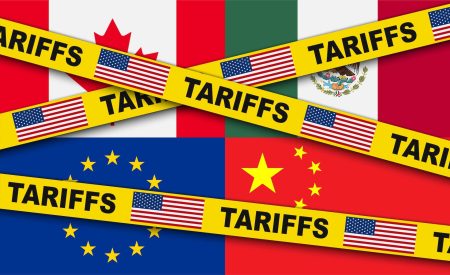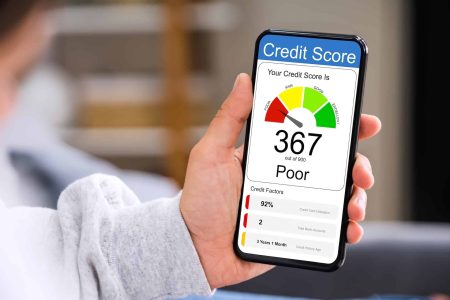This probably won’t shock you. Turns out, food is where Americans tend to overspend the most. So it’s probably top of mind for you too! Maybe you’re wanting to rein in that grocery budget but you’re worried you can’t do it and still eat well.
Don’t worry! Eating healthy and living on a budget don’t have to be opposites or enemies. You can do both. Try these 21 tips to eat healthy on a budget. Ready, prep, go!
21 Tips to Eat Healthy on a Budget
If putting all 21 tips in action right away seems overwhelming, start with the first three, and then start working more and more of these tips throughout the month. Small steps. Big savings. Heck yes.
1. Budget for groceries.
What’s the first essential step to eating healthy on a budget? You have to budget for groceries. Every. Single. Month.
Here’s how: Look back at your last couple of bank statements. What did you spend on groceries each month? That’ll give you a starting point to decide how much you’ll spend this month. This will get easier the longer you budget. It may take you about three months to get it right—but keep at it!
There’s no set-in-stone budget percentage for how much you should spend on the grocery budget line. But if you’re curious, the average family of four spends between $928–1,108 a month on groceries.1
2. Plan your meals.
Meal planning—it’s healthy for your body and your budget. And the best meal plans happen in the kitchen. Start with what you already have, look at recipes, and keep your store’s sales ad handy. (Yup, we’re talking about the old-school newspaper ads with the weekly sales . . . or the online version.)
Build your meals around what’s on sale that week and what you already have in your pantry and freezer. You’ll save more and waste less.
Pro tip: Check out the free Rachel Cruze Meal Planner and Grocery Savings Guide to learn all the ins and outs of this awesome money-saving method.
3. Make a grocery list (and stick to it).
Once you know your meals for the week and what ingredients you already have to make those healthy recipes happen, you should write out a grocery list with everything else you need.
The best grocery lists are organized by aisle, or at least by store section. This keeps you from going back and forth while shopping (because that’s a guaranteed way to end up with a load of junk food in your cart).
Then, it’s time to be firm. With yourself. Are you ready? Practice saying these words in your head: It’s not on my list. Remember, you carefully crafted your grocery list and know the store’s sales and coupons already.
Now, if you realize you forgot something you needed (because we all do!), that’s fine. But grocery shopping isn’t improv night at the comedy club—it’s no time to go off script.
4. Cook at home.
Have a busy week ahead? That’s when you’re tempted to grab greasy fast food on the way home. Know this. Own this. And beat this.
When you meal plan, consider those hectic nights ahead of time and put quick, healthy dinners on your grocery list. Also, keep some healthy nonperishable snacks in your car to keep the munchies (and grocery budget) under control.
5. Compare grocery stores.
Loyalty is a super important quality in friends and employees, but don’t let your loyalty—or your habits—keep you going back to a grocery store you can’t afford.
Try our free Meal Planner to save money on groceries!
Look online at store promotions. Ask friends where they go and why. Don’t listen to the ones who say they like the music selection over the loudspeaker—listen to the ones who say they saved hundreds when they switched grocery stores. Then, test it in real life! Find the cheapest grocery store, and become loyal to all the savings you’ll get from going somewhere new.
6. Use coupons and apps.
Whether you clip them or click them, don’t forget the power of coupons! Most supermarkets have mobile apps full of coupons to help you score some great savings. Download the apps and use them as you make your grocery list.
7. Shop weekly sales ads.
Don’t forget those sales ads (which you can probably find inside those store apps too). And when you find a coupon to use on something already on sale that week, that’s grocery-buying gold.
Fresh meats, veggies and fruits are especially great items to use sales ads on. If brussels sprouts aren’t on sale this week but green beans are, then you’re eating green beans with your baked chicken.
8. Stop buying processed food.
Hey, you know what isn’t healthy and racks up your food budget? Processed food. We’re talking about things like chicken nuggets, pizza pockets, refined sugars, boxed mashed potatoes, frozen dinners, prepackaged meals, cookies, potato chips and other salty snacks. They aren’t doing your health any favors, and they’re such a tempting way to overspend.
Here’s a good rule of thumb: Stick to the outer edges of the grocery store when you shop. The closer you go toward the middle aisles, the more processed the food gets.
9. Drink more water.
It’s crazy how easy it is to drink your calories (and drain your budget) just by pumping your body full of soda. Even “healthy” fruit juices can be packed full of sugar.
To save cash (and calories), try switching to water and straight-up black coffee as your beverages of choice. It might sound like torture at first, but you’ll be surprised by the impact it can have to your body and your budget over the long haul.
10. Buy in bulk.
Bulk purchasing isn’t always the best way to save—but sometimes it is. Before buying something in bulk, ask yourself these four questions:
- Can I eat it before it’ll go bad?
- Is the price per ounce cheaper?
- Do I have space for this larger quantity?
- Will I really use it?
If you can answer yes to all of these questions, then go for it! Buy those things in bulk so you can save in bulk.
11. Shop online.
Have you looked into buying groceries online? These days, about two-thirds of adults are in on this shopping method.2 You can fill your virtual shopping cart from anywhere. Then pick up your order or have it delivered to you.
Now, there may be added costs depending on where you shop—some stores charge for this service, while others don’t. But don’t let the fee discourage you. If you get sidetracked in the actual store and always buy things that aren’t on your list, this option can force you to shop with a plan. You’ll probably save more in the long run—fee or no fee.
Plus, as you fill your online cart, you’ll easily watch your spending. You can delete some items or look for cheaper options before you check out. That way you aren’t surprised by the total in the end.
12. Be wise about organic groceries.
If you want to purchase organic produce without busting the budget, focus on just the dirty dozen items: strawberries, spinach, kale, nectarines, apples, grapes, peaches, cherries, pears, tomatoes, celery and potatoes. These are the 12 kinds of produce that usually have the most pesticides, so they’re the best ones to buy organic.
13. Buy generic brands.
Be generic. Not in your personality—in your brand choice. Our research from the State of Personal Finance shows 3 in 4 Americans have noticed higher prices in the last three months for the things they normally buy. That includes groceries—and going generic is a great way to combat the rise in grocery costs.
And you know what? Many times, the off-brand and brand-name items aren’t really all that different when it comes to their actual ingredients or quality.
We know that isn’t always true—and it’s fine be picky about your favorite cereal, chocolate or coffee as long as you budget for it. But give generic brands a chance. Sometimes you’re drawn to a certain brand only because the company spent more on design and marketing—not because they’re delivering a higher-quality product.
14. Don’t shop hungry.
We know you’ve heard it before, but don’t shop hungry. That’s the surest way to load up on impulse buys and junk food—because everything salty or sweet is a major temptation on an empty stomach. Eat a healthy snack before you head out the door, or go shopping right after a meal.
15. Buy seasonal produce.
The problem with healthy produce is that it goes bad. That doesn’t mean you shouldn’t buy it—just don’t get more than you’ll eat. One easy fix is to get some produce that can ripen on your counter instead of decomposing there. That means you buy some yellow bananas for now and some green ones for later.
Rotate your produce picks based on what’s on sale and in season. And don’t look down on frozen fruits and veggies. If they have no added sugar or salt, they’re just as healthy!
16. Be (healthy) snack ready.
Don’t forget to buy more than just meals. You need healthy snacks on hand for everyone in the house. Keep some snacks at work, too, so you aren’t running to the snack machine every time your tummy growls.
17. Buy less meat.
Meat isn’t cheap. So, try a meatless night (or two) each week to save space in the grocery budget. This opens the door for lots of other protein options—like beans, lentils, eggs (so cheap!), chickpeas, green peas (yes, really), quinoa, tempeh or nuts.
We’re talking breakfast for dinner with scrambled eggs and whole-wheat pancakes, tons of salad options, and soups that fill your belly without emptying your bank account. You get the idea.
18. Repurpose leftover ingredients.
Once you make a meal, don’t forget about it in the fridge until it becomes a moldy science experiment. That wastes food and money. Put your leftovers to good use. Take that extra chicken from taco salad night and throw it into some cheese quesadillas later in the week. And that bag of frozen turkey meatballs you served with marinara and zucchini noodles? It had too many meatballs for one meal. So, serve the rest with low-sugar barbecue sauce on rice.
When you repurpose ingredients or pick items you can use more than once, it keeps you from buying all-new things for all-new meals every mealtime.
19. Repurpose leftover meals.
As you’re putting away the leftovers from dinner, don’t throw the whole casserole in the fridge. Portion it out in some good reusable containers. Boom. You’ve got cheap lunches for a day or two. Not only will this make your mornings easier, but it will also save you from drive-thru temptations.
If you’re staring down a serious amount of leftovers, don’t forget the freezer! If something might go bad before you can eat it again, stick it in the freezer. Then, when you’re meal planning for another week down the road, don’t forget about those frozen meals.
In fact, when you’re writing down all the ingredients for chili (because ground beef and beans are on sale!), go ahead and double that recipe, freeze half, and enjoy the rest a couple weeks later. This will save you time and money—two of our favorite things to save.
20. Balance your purchases and diet.
You can balance your health and your budget no matter what diet you’re working with—whether you’re Keto, Whole30, Paleo, vegan, gluten-free or vegetarian or you have to work around food allergies. Here’s how.
First, look for stores that sell the special items you need for less. (More on that in a moment.) Then, stop buying the packaged health food items just because they have a label that says they connect to your diet. (That “keto-friendly” label is going to cost you so much extra.) Instead, learn to make them yourself! You’ll be surprised how some of those fancy, expensive fruit-and-nut bars don’t take a ton of work or ingredients to create in your own food processor!
21. Buy whole and do the prep.
Purchase your fruits, veggies and meats whole—and prep them yourself. That means you’re coring your own pineapples and dicing your own onions. Yes, it takes time to wash, peel and chop those whole carrots, but you’ll save so much money this way!
Bye-bye, baby carrots. Hello, extra cash. Yes, it’s a little extra work—but it’s one of the biggest tricks to eating healthy while staying on budget.
Best Places to Buy Cheap Groceries
Guess what? You don’t have to shop exclusively at grocery stories that market themselves as healthy in order to eat healthy. Here are some stores known for their cheap prices that totally sell healthy groceries too!3
- Aldi
- Costco
- Crest
- Fareway Stores
- Grocery Outlet
- Lidl
- Marc’s
- Market Basket
- Military Commissaries
- Save A Lot
- Trader Joe’s
- WinCo
- Woodman’s
Cheap Foods for Eating Healthy on a Budget
Okay, we know you might question a few of these items. This list won’t fit into everyone’s idea of “healthy food.” But if you’re looking for a go-to list of cheap foods to help you eat healthy on a budget, this is a good place to start:
- Eggs
- Multigrain pasta
- Multigrain bread
- Oats
- Russet potatoes
- Cottage cheese
- Spinach
- Tuna
- Dried lentils
- Carrots
- Apples
- Bananas
- Brown rice
- Chicken breast
- Apples
- Cabbage
- Sweet potatoes
- Oranges
- Kale
- Peanut butter
- Broccoli
- Onions
- Dried beans
- Quinoa
- Yogurt
- Frozen fruits
- Frozen vegetables
Eating Healthy on a Budget Is Possible
We keep saying that word. Budget. If you don’t have one or you’re in the market for a better one, check out our budgeting app, EveryDollar. It’s free!
And listen: Eating healthy on a budget is possible. You just have to be intentional, plan ahead, and stay strong—with your budget and your body.

Get your free EveryDollar budget started today!
Read the full article here










